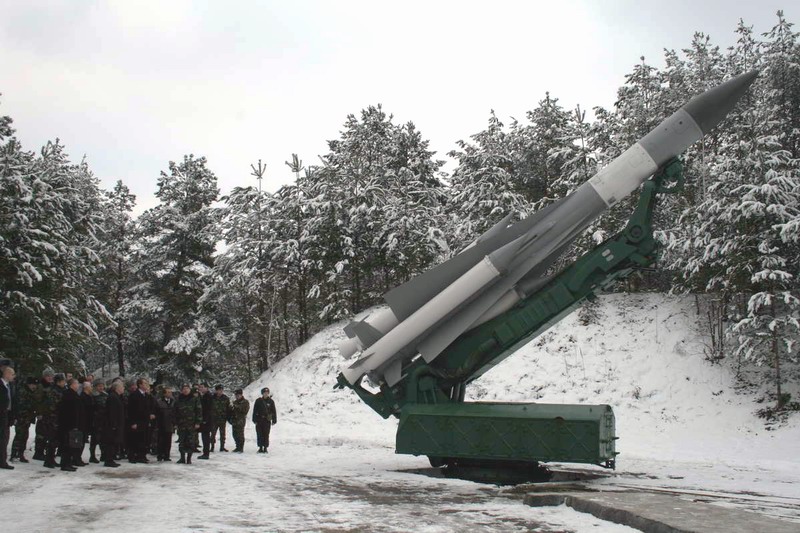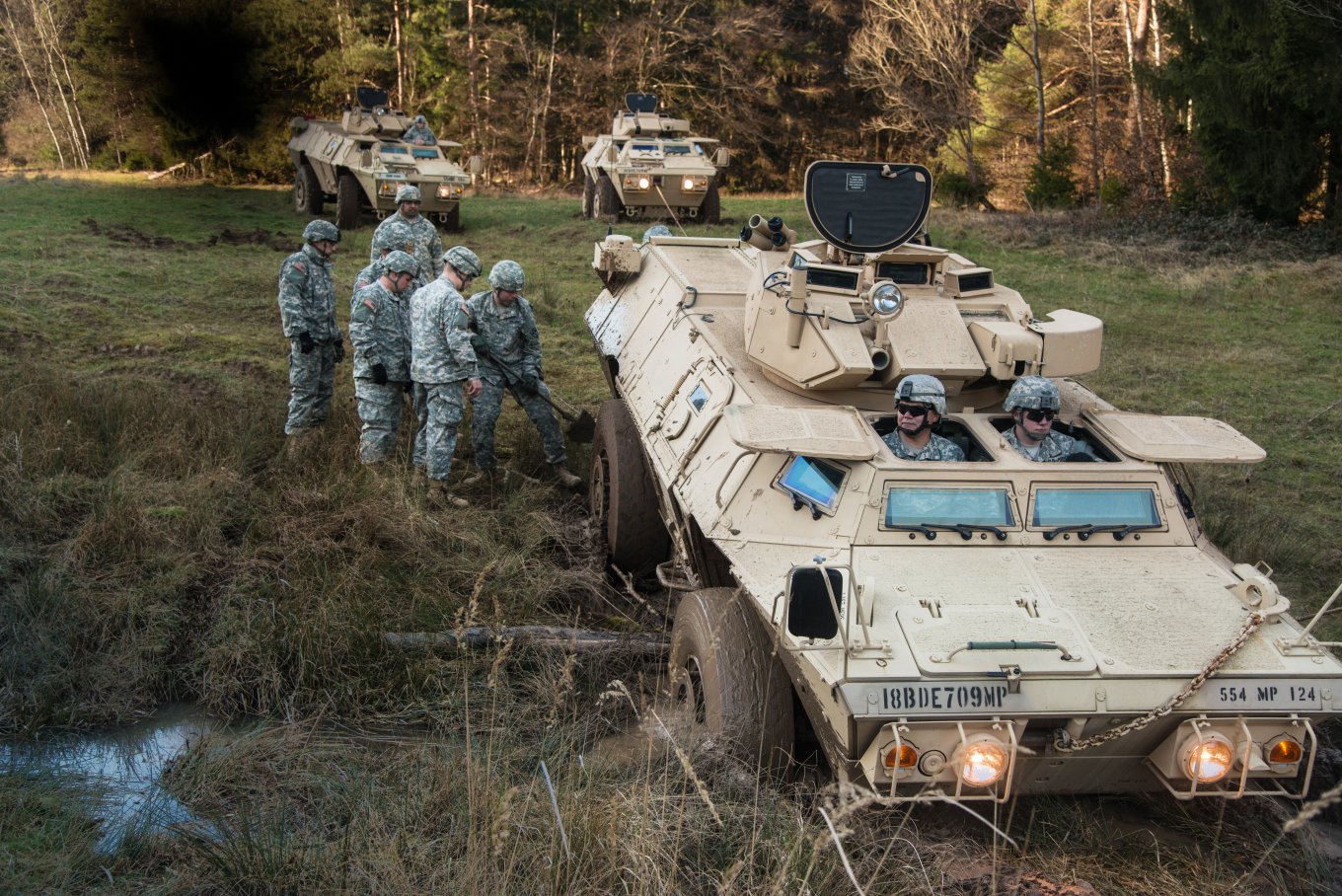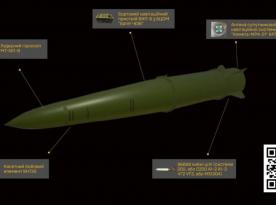Totally unserious and utterly subjective, Defense Express presents our yearly "The Most … Of" ranking where we award the most interesting pieces of military equipment based on their achievements. This is the second time we celebrate this way: last year's nominees were the F-16 fighter, Gepard SPAAG, FPV drone, Taurus and B-21 Raider. But times have changed, and many events and discoveries happened in 2024. Without further ado, let's start with…
The most secret weapon of 2024: Palianytsia
During Ukraine's Independence Day celebrations, a new type of indigenous weapon project was officially revealed to the public — the Palyantsia "rocket drone." It had been successfully used in combat, and there is even its official image, albeit just a CG render reminiscent of a cruise missile.
Read more: Multiple Countries Invested $931 Million in Ukraine's Defense Industry in 2024
After the disclosure, Palianytsia became sort of an urban legend credited with almost every other successful attack by Ukraine on russian territory, while the russians used the name to describe any jet drone or even suspicious-looking piece of debris they find around their destroyed military bases or oil depots.
This all is to be expected when the capabilities of Paliantsia are outlined very generally, and even its dimensions — let alone technical specifications — remain a mystery. The alleged looks of this weapon also remain but the designer's impression.
Meanwhile, other similar products, such as the Peklo drone, for example, have already been demonstrated openly. Though we are not critical here, just the opposite, actually: a good surprise onto a russian ammo dump is without a doubt better than any announcement. Speaking of surprises…
The most surprising weapon: S-200
On January 14, 2024, the Armed Forces of Ukraine managed to perform the first in history takedown of an airborne early warning and control system. The russian A-50U was intercepted and shot down over the northern coast of the Sea of Azov. On February 23, Ukraine pinned down and destroyed another aircraft of this type, perhaps the crew thought it would be safer to fly deep in its territory over the Krasnodar Krai.
Then, on April 19, a new record was set for the distance at which an aerial target was shot: 308 km. This is how far Ukrainian missiles reached to eliminate a Tu-22M3 strategic bomber. Having lived for another several dozen kilometers after being hit, the aircraft fell near the Bogomolov settlement in the Stavropol Krai.

Officially, at least in the latter two instances, the targets were destroyed thanks to the S-200 air defense system, apparently modernized because otherwise, it's an extremely archaic and de-facto stationary system with a monstrous radar for illuminating targets.
Considering that the S-200 was developed in the 1960s and entered service in 1967, the fact this weapon forced the russia to give up on using A-50s to support their war against Ukraine really is most unexpected. Pulling the radar aircraft further into the safety was meaningless since they simply wouldn't see anything from that far.
The longest wait of 2024: M1117 Guardian
Although it might feel like Ukraine's most long-awaited weapon was the F-16 multi-role fighter, this is not quite technically correct. The F-16s were officially demonstrated on August 4, on the 20th anniversary of the Ukrainian Air Force. But they were promised just a year earlier, in August 2023, by the Netherlands. Until then, the provision of Western aircraft was only a hot topic of discussion. In fact, the longest wait since the official commitment was for the American M1117 Guardian armored personnel carriers.

250 of these vehicles were included in the U.S. arms assistance package under the USAI program back in November 2022. Since then, they faded from focus until all the way to September 2023, when during a briefing for Defense Committees of the U.S. Congress, it transpired that the refurbishment of Guardians would take another 18 months to finish.
Finally, the first M1117 Guardian was seen in service with the Armed Forces of Ukraine in March 2024. The transfer in general became record-breaking in duration, compared to other weapons and military equipment, with an enormous execution time frame of 499 days. And that is not some kind of sophisticated equipment, basically just a recovery vehicle, similar to the BRDM-2. In the end, it is not surprising in the slightest that the news of its appearance became one of the most popular on our website for the year.
The most helpless weapon of 2024: Zircon
On February 7, 2024, russia used its ZM22 Zircon hypersonic attack missile for the very first time in combat since the announcement of the weapon's existence personally by Kremlin's dictator Putin back in 2019. This development was granted a special place in the pantheon of russian "one-of-a-kind" weapons. However, in reality, Putin's wunderwaffe flopped and turned out to be the biggest scam ever done by the russian Ministry of Defense.

Instead of the promised Mach 9, the air-launched ballistic missile only could reach Mach 5.5 during its midcourse, down to Mach 4.5 on the most important, terminal phase of flight. Instead of being the "killer of aircraft carriers," it can sink a corvette at most because the weight of the warhead does not exceed 150 kg. Instead of breaking through "all existing and promising missile defense systems," two Zircons were successfully intercepted at once by the Patriot SAM system in the version created 10 years ago.
The only thing that turned out to be true is that the Zircon is a real hypersonic missile because it is equipped with a very expensive hypersonic ramjet engine, though it did not give any considerable advantage.

The most anticipated disclosure of 2024: Phoenix Ghost
In May 2022, one of the military aid packages from the United States included unknown Phoenix Ghost kamikaze drones. Almost nothing was known about them, neither their appearance, nor specifications and capabilities, only an extremely vague description.
With such a shroud of mystery, many times unrelated drones were said to be Phoenix Ghosts. It was only in October 2024 that they were declassified. As it turned out, Phoenix Ghost all this time was a family of suicide drones from AEVEX Aerospace.
The project included the Disruptor drone with a range of 600 kilometers and a warhead weight of 22 kilograms; the Dominator with a range of over 500 or even 1,200 km depending on the engine, and a 16-kg warhead. And there is the small Atlas, with a claimed range of 120 km and conceptual similarities to the Switchblade.
As more details were declassified, their prices were revealed, and a fairly detailed analysis of their components was published. Disassembled, Phoenix Ghost showed quite a pragmatic approach to a modern expendable UAV design heavily utilizing commercial-grade parts.
Read more: Top Five "The Most of 2023" Among Weapons, Vehicles and Military Equipment














